Across-the-Plot Gardening Tips May 2023!
Merry May! Radiant Flowers, Luscious Veggies!

Are you having fun?! Does your garden make you this happy?! PLANT MORE!
Our Santa Barbara April daytime temps varied from 59 to 84! Night temps have been 42 to 56 but dropping back to 47 the first week of May. Depending on what you are planting, some gardeners will wait until Mid-May. Sweet peppers need night temps steadily above 55°F, some say 60, and soil temps above 65°F. Get out your soil thermometer and check the soil temp where you garden! If planted too soon, sometimes plants miss their natural sequence of production, and never produce. Best to replant if you suspect this is happening. In general, plant another round 2 -3 weeks later just in case! See Best Planting Temps Per Veggie!
May, June Planting Timing
MAY is time for cantaloupe, sweet bell peppers, pumpkins and squash! Try some Urizun Japanese Winged Beans! Wait until the soil has warmed to 70°F before planting squash and melons. Many wait until May, some even June, for warmer drier soil, to plant tomatoes to avoid soil fungi. Some gardeners wait until JUNE to plant okra. Okra really likes heat and grows quickly when happy. Choose faster maturing varieties for coastal SoCal. 2022 I tried Heavy Hitter, an early super productive variety. We had a cool summer and the standard Burgundy Okra outperformed it. This red variety has always outperformed every green I’ve grown. If YOU anticipate a HOT summer, plant a tad earlier, but be prepared to deal with it if summer is overcast as often is the case after all.
Long beans are spectacular and love heat. Late May, June is the best time to start them. They grow quickly from seed. They last longer than other beans, hitting their stride toward the end of summer. Certain varieties of them don’t get mildew either! Their unique flavor keeps your table interesting. See more!
While we are waiting for the right temps, do soil preps that are still needed. Weed out plants that won’t help your summer lovers. Make your soil fluffy with water holding compost, only 5 to 10%, while also adding tasty well aged manure! Add worm castings to areas that will be seeded. Castings improve germination, germination is sooner, seedlings healthier! Plan for year round bee habitat and install helpful companion plants in advance.
Plant another round of your favorite heat lovers! Might be eggplant, limas, bell peppers and pumpkins! Transplant or seed different varieties of beans, cucumbers, eggplant, melons, peppers, squash, and tomatoes than you planted before! Sow and/or transplant asparagus, beets, carrots, celery, chard, herbs, kale, kohlrabi, leeks, heat-tolerant leaf lettuce, summer-maturing onions, parsley, peanuts, rhubarb and spinach! Add white potatoes and radish with zucchini, radishes with cukes to repel cuke beetles, and with eggplant to repel flea beetles. Add fillers and littles under bigger plants as living mulch! Put some color in your choices! Plant RED table onions, pink celery, fancy multi-color lettuces! Tips for super Successful Transplanting!
Time for heat and leaf tip burn resistant, bolt-resistant lettuces of all kinds! Sierra, Nevada, Jericho, Black Seeded Simpson are some. Green Star wins the beauty and production award!
Choose heat and drought tolerant varieties when you can. For example, why wait when it gets HOT and your tomato stops setting fruit?! Get heat tolerant varieties the heat doesn’t bother! Heat tolerant tomatoes keep right on producing when temps get up to and above 85! Rattlesnake beans are a winner! They produce in up to 100 degree weather! They have a slightly nutty flavor. You do have to keep watch and pick almost daily because they get long and plump quickly – and are still tender!
Problem temps for most tomatoes:
High daytime temperatures (above 85 F)
High Nighttime Temperatures (above 70 F)
Low Nighttime Temperatures (below 55 F)
Check out this nifty page HOW TO GROW TOMATOES IN HOT WEATHER at Bonnie Plants! Do these things well in advance to be ready! Select as Julie Martens recommends: ‘Heat-tolerant tomato varieties like Heatmaster, Solar Fire, Summer Set, and Phoenix can form fruit even as temperatures climb. These tomatoes are often described as “heat set” types, or have heat-related words or locations in their names.’ If your plant is not heat tolerant, wait. When things cool down, your plant will start making flowers and setting fruit again. See also Tomatoes are the Fireworks of Your Summer Garden!
Tomatoes! Heirlooms are particularly susceptible to the wilts, Fusarium and Verticillium. If your soil is infected, instead, get varieties that have VFN or VF on the tag at the nursery. The V is for Verticillium, the F Fusarium wilt, N nematodes. Ace, Early Girl, Champion, Celebrity, are some that are wilt resistant/tolerant. In the Mother Earth News tomato survey, they found gardeners chose heirlooms over hybrids if their soil is wilt/blight free. Otherwise, the longer the gardener has gardened, they more they chose wilt resistant toms if their soil has fungi. Home Improvement/ACE has the largest tomato selection in the Santa Barbara area! See Special Planting and Growing Tips for your Tomatoes and Cucumbers!
Once you have these strong varieties installed particular maintenance will keep them healthy longer.
- Remove any leaves that will touch the ground if weighted with rain, dew or by watering.
- Remove infected leaves the curl the length of the leaf or get brown spots.
- Lay down a loose 1″ deep straw mulch blanket to allow air circulation and the soil to dry. No friendly fungi habitat. The most important purpose of this mulch is to keep your plant’s leaves from being water splashed or in contact with soil, which is the main way they get fungi/blight diseases.
- When the straw gets flat and tired, remove (don’t compost) and replace.

Flowers or veggies that are great companion plants for your tomatoes!
![]() Strengthen your summer garden! Always be thinking what goes near, around, under, with, what enhances your plant’s growth and protects it from damaging insects and diseases, or feeds your soil! Keep the biodiversity rolling! Plant pest deterring plants first so they will be up and working when you put in your seeds or transplants! If you forget, you can always add your companions later.
Strengthen your summer garden! Always be thinking what goes near, around, under, with, what enhances your plant’s growth and protects it from damaging insects and diseases, or feeds your soil! Keep the biodiversity rolling! Plant pest deterring plants first so they will be up and working when you put in your seeds or transplants! If you forget, you can always add your companions later.
- Alyssum is a great old fashioned pretty border plant, an understory living mulch. And WHITE Alyssum repels the cabbage butterfly and feeds mini beneficial pest predators like hoverflies whose primary food source is aphids!
- Basil repels several unwanted insects, is great near tomatoes but not in the basin with the tom. The tom needs less water. Plant the Basil beside the tom basin. The deeper tomato roots will get water used to water the Basil!
- Beans, Cukes, Dill, Radish Combo! Cukes and Beans are great on the trellis, one high, one low unless you are growing long cuke varieties. They can fill a trellis all by themselves! Dill to go with pickling cukes. Radishes to deter Cucumber beetles.
- WHITE Potatoes with Zucchini & Cukes to repel squash bugs.
- Radish with eggplant, cukes & zukes as trap plants for flea beetles and to repel cucumber beetles.
- Carrots love being with cilantro and chamomile, and chamomile improves the flavor of any neighboring herb! Plus, it helps neighboring plants – called the Plant Dr!
- Calendula traps aphids, whiteflies, and thrips! Plant with tomatoes and asparagus.
- Chamomile is a love! Pretty, great tea, known as the “plant doctor,” chamomile has been known to revive and revitalize plants growing near it. That’s especially good to know for plants that are susceptible to diseases. Plant it by plants that are wilts susceptible, like your tomatoes & cucumbers .
- Spanish Lavender, Purple Cosmos are favorites of pollinators that love purple!
- Marigolds are brilliant and called the workhorse of pest deterrents!
- Lettuce and carrots make a great understory below larger plants like peppers, eggplant. They act as living mulch! Leave a little open space to lightly dig in some compost or manure later in the season. If you already have enough lettuce, beets and carrots, scatter a living mulch, soil feeding legume seed mix under those plants. At the end of the season you can turn it all under – aka Green Manure. Or remove the larger plants, open up spots in the living mulch and put in winter/summer plants! See much more – Living Mulch/Green Manure!
- Hot peppers emit a chemical from the plant roots that helps prevent Fusarium wilt, root rot, and a wide range of other plant diseases!Plant whole sets of companion plants as in the image above right! Very efficient use of space!See more at Super Spring & Summer Veggies Companion Planting Tips!
Now is the time watering becomes critical!

Lots of rain so far this year. But, please, always use your Water Wise Practices!
Please water before 10:30 AM and after 4 PM as possible. Use a watering sprinkler head or wand with an easy-to-use shutoff valve. Berms need to go to the dripline or further for some plants so tiny subsurface feeder roots can fully supply your plant with water and nutrients as it needs.
SEEDS need to be kept moist. If they dry they die. If the soil gets a dry crust, tiny seedlings might not be able to push through. Covering it very lightly with a very fine textured mulch like ‘Gorilla Hair’ can help. It keeps the soil moist longer and seedlings can push through it. If not, you either replant or if you don’t have time, just go get transplants. Of course, the advantage of seeds is you have a lot more variety choices than what you can get at the nursery if you aren’t too late in the season to get them, if you don’t have any more seeds… Always purchase extra seed for accidents and incidents, ie birds or insects, extreme temps.
A consideration for seeds is for convenience, plant them in a very mini ‘trench,’ nursery bed or patch, a low spot you make for them. That area will stay moist longer. Plant your seeds, cover with fine hairy light mulch. Try it! Once the seedlings have second leaves, transplant them to their permanent homes.
TRANSPLANTS need to be kept moist the first few days until they acclimate to their new home. Gentle watering. I water once, then go back and do the whole area again, giving the first watering a chance to soak down. Flooding is not necessarily a good choice. Soil needs oxygen, and plants can literally drown.
THE SCHEDULE What schedule, LOL?! It all depends on the weather or if you have planted seed have seedlings just up. In our area there are hot days, cool days, overcast days, sometimes windy. But very hot and windy together might mean watering twice a day, whereas cool and overcast might mean an inch of water a week could be just fine. Water beans, cukes, lettuces and short rooted varieties of strawberries more frequently – 2 to 3 times a week, daily, in very hot or windy weather. If you have seeds in, you might provide shade and water twice a day! Poke your finger in the ground after rains to see just how deep the water soaked in. Use your shovel and wedge a spot open to see if the soil is moist deeper.
To SAVE WATER In Santa Barbara, a long summer, low water table area, consider getting only indeterminate tomatoes. To keep a tomato supply for your table, if you plant determinates, that have a burst of tomatoes then taper off, you have to keep planting, wait for another two months to produce. Your new tomato will need water while there is no production. Indeterminates produce all summer long, with no waiting. Determinates are good for cooler northern short summers and crops that come in all at once for canning! Early determinates are good for getting tomatoes on the table soonest! It is common practice to plant both at first planting time.
- Use a long water wand to water under your plants, not the foliage. Use one with different settings so you use only what your plant needs, and an easy-to-use shut off valve so you use water only when you need to. See Hand Watering Veggies During Drought? Big Yes!
- Furrows, basins and berms are perfect for water capture, just like the SW indigenous peoples did with their waffle gardens. The water collects at the bottom, the drying wind goes over the berms. You can raise your tomato and cucumber basins onto the tops of your mounds so there is better drainage and your soil dries somewhat. For plants that are not wilt fungi vulnerable, dig your basins and furrows down, less work because no berms need to be made. Let the normal soil level be the ‘berm’ for the wind to blow over. See Growing Super Veggies in HOT, Drought, Desert Areas!
Most plants need to be kept moist. Kept moist. Dry crusty soil keeps your soil from breathing. Compost, worm castings, mulch and planting living mulch are all good answers. Compost has excellent water holding capacity. Work it in gently around your plant to just beyond its drip line. So as to damage as few roots as possible, maybe only do one or two sides of your plants so all the feeder roots are not destroyed. Feeder roots provide most of the nutrition and moisture for your plant, and it will set your production back if your plant has to stop, gets hungry, must regrow them. Worm Castings have super water holding capacity! Mulch only if your soil temps are up to par. Otherwise, wait, so the mulch doesn’t keep your soil cool. In a cool summer you might choose not to lay down mulch.
Living mulch has two advantages over dead mulch like bark or straw. 1) Living mulch can be an edible understory of small plants I call Littles. Their shade keeps the soil cool and moist. On balance they need water too, so you might use a wee bit of more water, but you also get 2 crops in the same space! 2) Living mulch can be soil feeding legumes under your bigger plants. They too shade and keep your soil moist and looser. In Santa Barbara a good choice can be White Clover. Get bulk seed at Island Seed & Feed.
The plant that does well with straw is cucumbers! It keeps the fruits clean and soil free, and, drum roll, might slow cucumber beetle movement from one plant to another! Plus, it is great shelter for wolf spiders, daddy long legs and other predators. The more spidies the more healthy your garden!
The first plant you mulch is any over summering Brassica – broccoli, kale. They like cool soil, so pile it on good and deep, 4 to 6 inches not touching the stem, or plant a dense understory of living mulch that won’t be harvested, or if you do harvest, cover that spot with straw ASAP! Peppers are quite the reverse, the last plants you mulch. They like soil temps above 65. Mulch keeps the soil cooler, so use your soil thermometer to see if the mulch is cooling it too much for your peppers.
Pumpkins, melons and winter squash may do much better with NO mulch at all! They all need heat. Rather than trellis these crops, up in the cooling air, leave them on the ground where it’s good and hot. You might even put in a straw bale windbreak for them if you have the room. Put the bales on their sides in a U shape that opens to the hottest time of day sun! Put reflective pie tins under fruits, or mulch under the fruits to keep them clean and above ground insect level.
Sprinkle and pat on Mycorrhiza fungi right on the roots of your transplants when you put them in the ground. It increases uptake of nutrients, water, and phosphorus that helps roots and flowers grow and develop. Ask for it bulk at Island Seed & Feed in Goleta. The exception is winter plants in the Brassica family – Broccoli, Kales. They don’t interact with mycorrhiza.
Garlic, bulb onions, and shallots naturally begin to dry this month. When the foliage begins to dry it’s time to STOP watering them. Dry outer layers needed for long storage will form on the bulbs. When about half of the foliage slumps to the ground, bend the rest to initiate this maturing. The bulbs will be ready for harvest when the foliage is thoroughly dry and crisp.
Natural Disease & Pest Prevention!
- Be wise and pick the right plant varieties for your temps and conditions! Get heat tolerant, bolt resistant, drought tolerant, disease tolerant/resistant. If you are just starting, just start! You will learn as you go. Our climate is changing, so we are all adjusting and plants will be being hybridized, and hybridize naturally, for new climates. We can get varieties from other areas that are already used to conditions we will be having. Together we will do this. Locally, save seeds from plants that do the best with the heat and share some of those seeds at the Seed Swap and with other gardeners.
- Think biodiversity! Plant companion plants that repel pests, attract pollinators, enhance each other’s growth so they are strong and pest and disease resistant. Mix it up! Less planting in rows, more under stories and intercropping – biodiversity. Split up groups so pests won’t go from one plant to the next, and the next. When you do rows, alternate plants like a tomato, eggplant, pepper. Allow enough room for air space between, no leaves of mature plants touching each other. That breaks up micro pest and disease habitats.
- Make top notch soil!
- In planting holes
– Add worm castings for your plants’ excellent health. 25% is best; 10% will do if that’s all you got.
– Add a tad more tasty properly aged manure mixes where manure lovers like peppers will be planted.
– Add non-fat powdered milk for immediate immune system support at planting time
– Put in a finely ground bone meal for 2-3 months later uptake when your plant gets to flowering time.
– Add bird guano high in P, Phosphorus, at planting time. It helps your plants continue to bloom LATE in the season! An NPK ratio like 1-10-0.2 is good, takes 4 months to become available to your plants.
– Add an eency tad of coffee grounds (a 1/2 of a %) if you have wilts in your soil
– Sprinkle mycorrhizae fungi directly on transplant roots, all but Brassicas, at planting time to increase their uptake of nutrients and water.
– Use slightly acidic compost where you will be planting celery and string beans. - Immediately drench your transplants, foliar feed, with a non-fat powdered milk, baking soda, aspirin, soap mix to jazz up their immune systems. Specially give your peppers an Epsom salt and soap mix foliar feed for a taste of sulfur. More details and all the recipes.
- Maintenance! Keep your plants strong while they are working hard! Be ready to do a little cultivating composts and manures in during the season (called sidedressing), or foliar feeding fish/kelp emulsion mixes if you don’t have predator pests like skunks! Some sites say with good starting soil you shouldn’t need to amend during the season. Your plants will tell you if they do need more food. Maybe your soil wasn’t perfect. Maybe your plant has phenomenal production and gotten hungry. When production slows down, decide if you want more. Feed your plant a bit and see what happens.
- Keep your plants watered and vibrant, but not so much as to make their leaves soft and inviting to munching insect pests like aphids, leafminers.
- Trap gophers immediately if you are able. Better is to install underground wire prevention.
- Harvest promptly. Insects and diseases can signal when plants/fruits are softening and losing strength as they age, are past prime. Insects are nature’s cleaner uppers, and they and disease organisms are hungry! If leaves are yellowing or not looking up to par, remove them. Whiteflies are attracted to yellow.
- Prevention A frustrating typical spring disease is Powdery mildew. It’s common on late peas, Curly Leaf kales, broccoli, beans, cucumbers and zucchini. Choose mildew resistant varieties! Plant leaving plenty of space for air circulation. Apply your baking soda mix. Drench under and upper sides of the foliage of young plants to get them off to a great start! Do this the same or next day if transplanting. A super combo is 1 regular Aspirin dissolved, a 1/4 cup nonfat powdered milk, heaping tablespoon of baking soda, a half teaspoon liquid dish soap per gallon/watering can. Reapply every 10 days or so, and after significant rains. Not only is prevention so much better than after mildew has set in, but this mix stimulates your plant’s growth! See Aspirin Solution.Cornell’s Disease Resistant Vegetable Varieties LIST is awesome! Take a peek before you order seeds or buy transplants! It may take some time to make your choices, but is so worth it! A point to know is some varieties are commercial, meaning they are tough enough to last through shipping, and all the time it takes to process the fruits. If you are eating fresh from your garden, you may not prefer some of those varieties. Try two or three so you have some choices. Look up the variety online and see other home gardeners’ comments. Note if the commenters are in an area with similar planting conditions as yours. If a commercial seed company is the seed seller, sometimes they will also sell in mini quantities to home gardeners! Yay! Just call that 800# and ask! Often they really enjoy talking with a home gardener, delighted you called! They generally are very well informed because their business depends on it. They can tell you inside things that aren’t in the catalogs!
The usual May culprits!
- Cucumber Beetles get in cucumber, squash and melon blossoms. They aren’t picky. Depending on your location, they are yellow greenish with black stripes or dots about the size and shape of a Ladybug. They are cute but are the very worst garden pest. They carry bacterial diseases and viruses from plant to plant, such as bacterial wilts, Fusarium and Verticillium, and mosaic virus, deadly to cukes, etc. Radish repels them, is a champion plant, a hero of the garden! Plant enough radish for you to eat and to let others just grow, be there permanently or at least until the beetles are done, gone. IPM data Straw mulch recommended.
- Cucumber Mosaic Virus, CMV, per IPM ‘…has a very wide host range including cucurbits (except watermelon), tomato, spinach, celery, safflower, beans, blackeyes, peppers, beets, potatoes, many ornamentals and weeds. The virus is transmitted by many species of aphids and could be seedborne.’ Buy your seeds from reputable seed houses.The 303 Plots, each 20′ X 30′, Long Beach CA Community Garden has been doing trials under guidance of entomologist, Dr. Perring at UC Riverside. Gardener Joanne Rice reports:1. Since aphids carry the virus from specific perennial weeds, we are trying to keep everything weed free.2. Starting January 1st, all members have been asked to put up yellow sticky cards to reduce the number of aphids for the year. Aphids hate hot weather so their mating time is the cold months. Dr. Perring says that will help. Also, since aphids hate hot weather, we will probably not plant squash or cucumbers until July when our real heat starts.3. Dr. Perring, when we talked, said that CMV does not damage the soil. The CMV, is on the roots of the infected plants and if when you remove the plants you do not remove every root, you will get CMV at next planting. [REMOVE suffering plants immediately so they don’t make more infected roots. If you think you may have missed some, remove any questionable soil well beyond the dripline and Do Not put that soil anywhere you will be growing vegetables.]
4. We are currently working on a list of veggies, Summer and Winter, that are known to be CMV resistant. If you have such a list, I certainly would appreciate it. [If any of you have a list, please send it to us!]
- Squash Bugs like your Zucchini and other squash, cucumber and melons. Plant radish and WHITE potatoes amongst them to repel the bugs. Let some of the radish grow full height, eat the others as usual! You will get three crops instead of just one! IPM info
- Flea Beetles look like large black fleas and do hop mightily! They seem harmless enough, make tiny little holes in the leaves of eggplant, potatoes, arugula. But, those tiny holes add up. As the beetles suck out the juice of your plant they disrupt your plant’s flow of nutrients, open the leaves to disease, your plant is in a constant state of recovery, there is little production. Your plant looks dryish, lacks vitality. The trap plant for them, one that they like best, is radish! Thank goodness radish grow fast! Better yet, plant it ahead of time, or ASAP when you put seeds and transplants in. IPM notes
- Whiteflies do the honeydew thing like aphids do, leaving a nasty sticky black sooty mold or white fibers all over your plant’s leaves. The honeydew attracts ants, which interfere with the activities of Whitefly natural enemies. They are hard to get rid of, so keep a close watch on the undersides of leaves, especially if you see little white insects flying away when you jostle your plant. Whiteflies develop rapidly in warm weather, in many parts of California, and they breed all year. Prevent dusty conditions. Keep ants out of your plants. Hose them away immediately. Calendula is a trap plant for whiteflies. See more

Now is the time to be thinking of soil prep for the future! Gather and dry good wood now for trial Hugelkultur composting at the end of summer, early fall! Woods that work best are alders, apple, aspen, birch, cottonwood, maple, oak, poplar, willow (make sure it is dead or it will sprout). Hugelkultur can be a simple huge pile or an elegant graceful design like this one above. Could be right in your front yard! Be creative! See more!
Plant Bee Food, Herbs and Flowers! Sow or transplant basil, borage, chervil, chamomile, chives, cilantro, comfrey, dill, fennel, lavender, marjoram, mint, oregano, rosemary, sage, savory, tarragon, and thyme. Comfrey, mint and oregano are invasive. Remove the bottom of a 5 gal container, sink it where you want your plant and plant in it. That contains the roots where you want them. Mint can jump ship, so keep a constant eye on it! Be mindful where you plant your herbs… Mediterranean herbs from southern France, like lavender, marjoram, rosemary, sage, savory, and thyme, do well in hot summer sun and poor but well-drained soil with minimal fertilizer. On the other hand, soft herbs like basil, chives, coriander (cilantro), and parsley thrive in richer soil with more frequent watering. Wise planting puts chives by your broccoli, kale, but away from peas if you are still growing some. Cilantro, a carrot family workhorse, discourages harmful insects such as aphids, potato beetles and spider mites, attracts beneficial insects when in bloom. Dill is a natural right next to the cucumbers since you will use the dill if you make pickles. They mature about the same time. Bumble Bees are special and need our support!
Let some of your arugula, carrots, lettuces, cilantro bloom! Bees, and insect eating birds and beneficial insects love them and you will get some seeds – some for the birds, some for you, some to take to the seed swap! Grow beauty – purple cosmos, marigold, white sweet alyssum – all benefit your garden in their own way! See Grow a Pollinator Meadow at Home in Your Veg Garden!
To plant a seed is to believe in tomorrow.
Audrey Hepburn, born May 4, 1929
Great Images at Rancheria Community Garden, Santa Barbara CA!
Updated annually
Check out the entire May 2023 Newsletter!
The Magic of Melons ~ Cantaloupe, Honeydew!
Pollination: Honeybees, Squash Bees & Bumblebees!
Mulching ~ Why, When, With What, How Much?!
Growing Super Veggies in Hot, Dry Desert Areas!
Upcoming Gardener Events! 13th International Permaculture Day May 7! 49TH Summer Solstice Parade June 25 2023, Theme is ROOTS! ADVANCE NOTICE NATIONAL HEIRLOOM EXPO Sep 2023!
SUBSCRIBE to the entire newsletter! Friend or Follow on Facebook!
Love your Mother! Plant bird & bee food! Think grey water! Grow organic! Bless you for being such a wonderful Earth Steward!
The Green Bean Connection started as correspondence for the Santa Barbara CA USA Pilgrim Terrace Community Garden. Both remaining Santa Barbara City’s community gardens are very coastal. Climate is changing, but it has been that during late spring/summer we are in a fog belt/marine layer area most years, locally referred to as the May grays, June glooms and August fogusts. Keep that in mind compared to the microclimate niche where your veggie garden is.






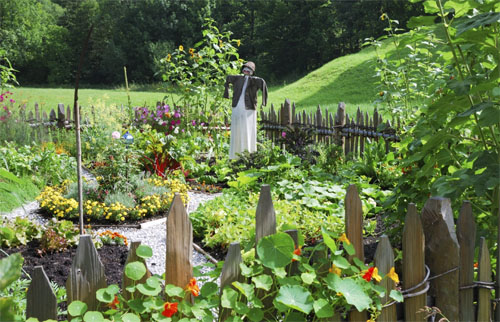

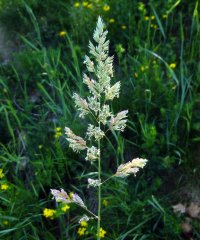 Watering & Weeding Wind and sun dry soil quickly and short rooted plants like peas, or seedlings, need to be kept evenly moist. That can mean every day to every other day watering, twice or more a day in summer heat.
Watering & Weeding Wind and sun dry soil quickly and short rooted plants like peas, or seedlings, need to be kept evenly moist. That can mean every day to every other day watering, twice or more a day in summer heat.
 Beets, Chard and Spinach get Cercospora leaf spot – like the Chard at left. Sadly, no resistant cultivars of table beet are known. Late fall or early spring plantings are most likely to be affected. Late summer when conditions are favorable (high temperatures 75-85˚F, high humidity, long leaf wetness periods at night) is the worst. Beet roots fail to grow to full size when disease is severe. Successive plantings made close together can allow disease to move from one planting into the next. It grows on infected crop residues, so immediately remove leaves that collapse on the ground. It is spread by rain splash, wind, irrigation water, insects, gardeners, and equipment. This is one case where AM watering really makes sense to reduce humidity. UMASS Amherst recommends to ‘Avoid overhead irrigation if it will result in prolonged leaf wetness periods (e.g., through the night); irrigate mid-day when leaves will dry fully or use drip irrigation.’ If all that fails, use foliar fungicides. Plant less densely for more airflow, thinnings are tasty! In general, harvest more frequently so leaves don’t surpass their prime health, start to soften, become vulnerable. If you have little garden space, planting only every 3 years in the same spot isn’t possible so cultivating, turning and drying the soil between plantings is good. If possible adding a tiny bit of coffee grounds, a half a %, would help kill off the Spot. Too much coffee grounds can kill your plant, make your soil acidic.
Beets, Chard and Spinach get Cercospora leaf spot – like the Chard at left. Sadly, no resistant cultivars of table beet are known. Late fall or early spring plantings are most likely to be affected. Late summer when conditions are favorable (high temperatures 75-85˚F, high humidity, long leaf wetness periods at night) is the worst. Beet roots fail to grow to full size when disease is severe. Successive plantings made close together can allow disease to move from one planting into the next. It grows on infected crop residues, so immediately remove leaves that collapse on the ground. It is spread by rain splash, wind, irrigation water, insects, gardeners, and equipment. This is one case where AM watering really makes sense to reduce humidity. UMASS Amherst recommends to ‘Avoid overhead irrigation if it will result in prolonged leaf wetness periods (e.g., through the night); irrigate mid-day when leaves will dry fully or use drip irrigation.’ If all that fails, use foliar fungicides. Plant less densely for more airflow, thinnings are tasty! In general, harvest more frequently so leaves don’t surpass their prime health, start to soften, become vulnerable. If you have little garden space, planting only every 3 years in the same spot isn’t possible so cultivating, turning and drying the soil between plantings is good. If possible adding a tiny bit of coffee grounds, a half a %, would help kill off the Spot. Too much coffee grounds can kill your plant, make your soil acidic.  unless they are left in the ground a long time, get old and weak. Thinning helps keep pests and disease from spreading from one to the next.
unless they are left in the ground a long time, get old and weak. Thinning helps keep pests and disease from spreading from one to the next.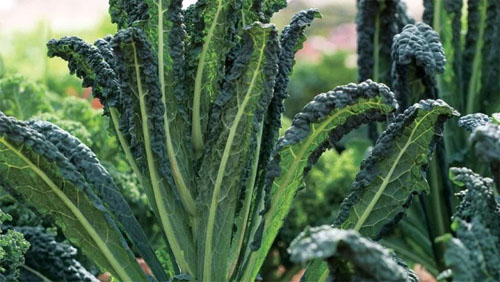

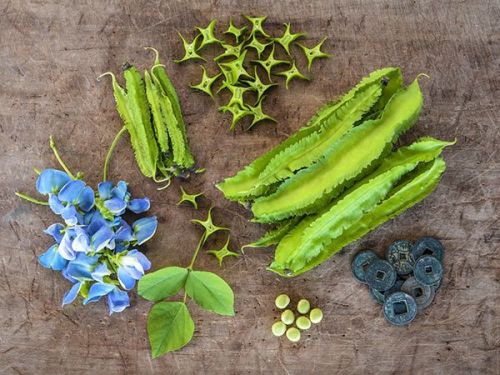
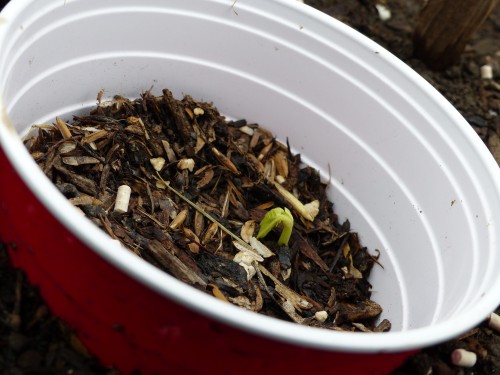




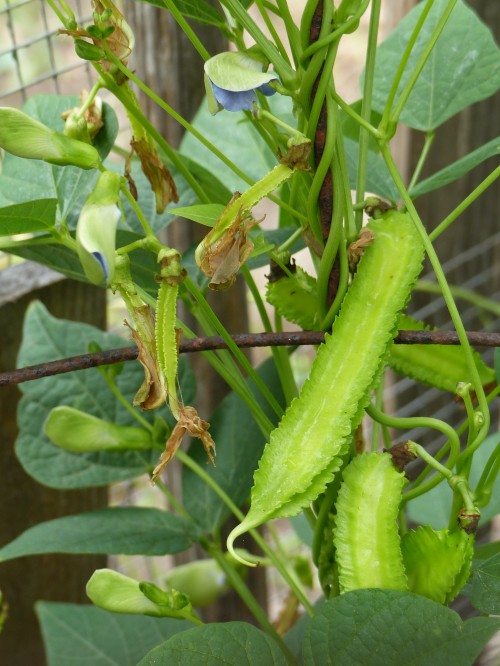

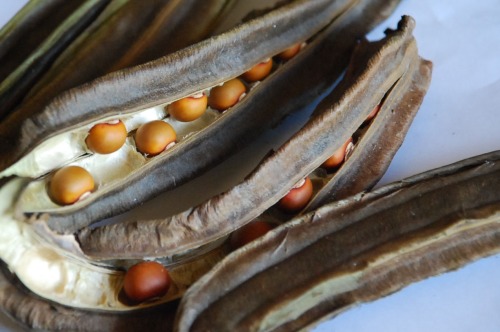







 Birds and Bees! Plant NATIVE wildflowers seed now to take advantage of winter rains for early spring flowers for native bees! Germination in cooler weather takes longer, so don’t let the bed dry out between rains. If you have space, make habitat for beneficial insects, birds and animals too! Start building now to put your
Birds and Bees! Plant NATIVE wildflowers seed now to take advantage of winter rains for early spring flowers for native bees! Germination in cooler weather takes longer, so don’t let the bed dry out between rains. If you have space, make habitat for beneficial insects, birds and animals too! Start building now to put your 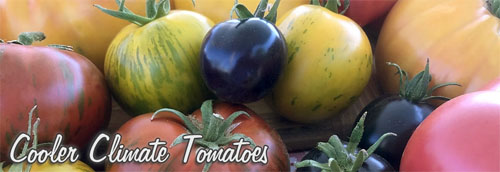


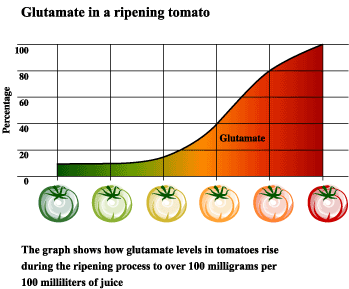 1999 All-America Selections winner mini Roma grape tomato, hybrid Juliet, gets rave reviews! Bonnie Plants says ‘The wonderfully sweet fruit are crack resistant and remain in good condition on the vine longer than most cherry tomatoes. The fruit are as soft and juicy as cherry tomatoes, they hold up well in salads, even leftovers, and they have a longer shelf life so you can keep them on hand without picking every day. The vigorous vines set lots of fruit on long trusses and keep setting fruit throughout the summer. Quite heat tolerant. Vines are long and vigorous, so give the plant room to tumble over its cage. One of the longest-lasting tomatoes in the garden. Hybrid. Resistant to early blight (AB). Tolerant to late blight (LB).’ One of our gardeners got abundant crop through October!
1999 All-America Selections winner mini Roma grape tomato, hybrid Juliet, gets rave reviews! Bonnie Plants says ‘The wonderfully sweet fruit are crack resistant and remain in good condition on the vine longer than most cherry tomatoes. The fruit are as soft and juicy as cherry tomatoes, they hold up well in salads, even leftovers, and they have a longer shelf life so you can keep them on hand without picking every day. The vigorous vines set lots of fruit on long trusses and keep setting fruit throughout the summer. Quite heat tolerant. Vines are long and vigorous, so give the plant room to tumble over its cage. One of the longest-lasting tomatoes in the garden. Hybrid. Resistant to early blight (AB). Tolerant to late blight (LB).’ One of our gardeners got abundant crop through October!